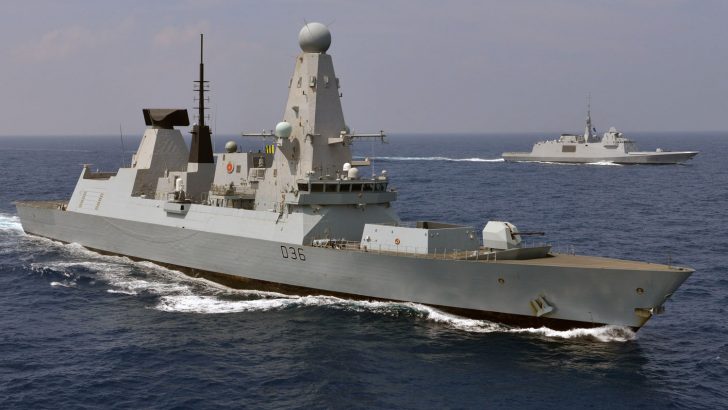Notebook
July 2009 saw the commissioning of HMS Daring, a Type 45 destroyer and the most technologically advanced ship the Royal Navy had ever deployed. Capable of travelling nearly twice as far and almost half as efficient again as the ship it was replacing, it had stealth technology and a huge radar which could keep tabs on 1,000 targets at once, as well as missiles capable of striking down a cricket-ball-sized object travelling at three times the speed of sound.
All very impressive, we might think, but there was one catch: it was very expensive. So expensive, indeed, at about £1 billion per ship, that Britain can afford just six of these ships, roughly half the number it had had of the previous ones. Currently, the British navy has just 19 surface combat ships – six destroyers and 13 frigates, down from a total of 33 warships in 2000.
The problem, of course, is that no matter how good a ship is, it – unlike Boyle Roche’s famous bird – cannot be in two places at once.
What does this have to do with the Church?
Last week saw two deacons being ordained to the priesthood in Dublin, just days after Archbishop Diarmuid Martin celebrated Mass for 15 priests who had died in the last year.
“Some will immediately say 15 dead and only two new priests. Statistics and numbers are important, but they are not the entire picture,” Dr Martin said, before adding: “Faith is not about numbers. The Church is not a Church triumphant in this life. What is vital is the quality of the life of faith that dwells in our hearts.”
Absolutely true as far as it goes, of course, as was the archbishop’s comment a few days later: “Certainly, we need new priests, but what is important is the quality of faith in people’s hearts and the level of witness that priests give.”
All true, again, but there are realities here, realities of reach. This isn’t just a year in which 15 priests died and but two were ordained; it’s also a year in which no new seminarians started priestly studies for the archdiocese of Dublin.
Energetic
Current figures suggest there will be at best 144 priests in Dublin in 2030, down from 369 now. If religious orders respond to their own vocational shortfalls by withdrawing from Dublin parishes, the number could be as low as 111, and by no means all of these will be healthy and energetic.
Fr James Daly and Fr Bill O’Shaughnessy may turn out to be wonderful priests, and the Faithful should be deeply grateful for their generosity and willingness to answer God’s call. However, no matter how good they are, there are still just two of them.
It’s a common line in the Church that numbers aren’t everything, and that’s utterly correct. But they are something.
A timely lesson
Not far from Syria’s Lebanese border, on a spur dominating the landscape, stands Krak des Chevalier, a crusader fortress described by T.E. Lawrence – Lawrence of Arabia to most people – as the “most wholly admirable castle in the world”.
A vast base for the Knights Hospitaller, at its peak it was manned by a garrison of 2000 men. Seemingly impregnable, it fell to the Egyptian Mamluks in 1271, its by then tiny garrison incapable of holding the castle’s walls.
In effect this was a case study in the famous adage of Frederick the Great, the 18th-Century Prussian king and general, that “he who defends everything defends nothing”; there may be lessons here for how the Irish Church best deploys its clergy in this depleted time.
The Bible, of course, is not short of strategic lessons, with perhaps the most obvious one at the present time being that of David and Goliath. It’s a lesson that the journalist Malcolm Gladwell developed to remarkable effect in his 2013 book – developed from a 2009 article – David and Goliath: Underdogs, misfits, and the art of battling giants.
Addressing subjects ranging from warfare to basketball, and rightly picking up on the wisdom of Lawrence of Arabia, Gladwell considers scenarios where underdogs beat the odds, picking up on situations where apparent major disadvantages turn out to be keys in success. It’s very far from being a perfect book, but it’s one that offers real insights too. It could be useful reading for people wondering where the Irish Church can go now.


 Greg Daly
Greg Daly Type 45 destroyer
Type 45 destroyer 